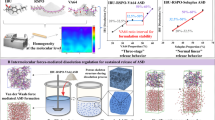Abstract
The aim of this study was to prepare highly porous carrier particles by emulsion solvent evaporation and compare the loading capacity of these beads with two traditional carriers, sugar beads, and microcrystalline cellulose granules during an interactive mixing process. The porous carrier particles were prepared by an emulsion solvent evaporation process using cellulose propionate as a binder, anhydrous dibasic calcium phosphate, and ion exchange resins as a fillers, and polyethylene glycol as a pore inducer. Micronized furosemide or griseofulvin powder was mixed with the same volume of each carrier in an interactive mixing process. The tableting properties, drug loading per unit volume of carrier, content uniformity of the mixtures, and dissolution of the drugs from the mixtures were measured. The results showed that highly porous microcapsules with desirable hardness equivalent to that of sugar beads and MCC granules were successfully prepared. On average the loading capacity of the new carrier was 310% that of sugar beads and 320% that of MCC granules during an interactive mixing process with very good content uniformity. The tableting properties of the microcapsules were equivalent to that of microcrystalline cellulose granules, and the dissolution of the drugs from interactive mixtures prepared with the new carrier was equivalent to that of drug suspensions. This showed that the prepared microcapsule carrier could be used to improve the loading capacity during an interactive mixing and to prepare tablets by direct compression.







Similar content being viewed by others
References
Harnby N. An engineering view of pharmaceutical powder mixing. Pharm Sci Technol Today. 2000;3:303–9.
Fan LT, Chen YM, Lai FS. Recent developments in solids mixing. Pow Technol. 1990;61:255–87.
Hersey JA. Ordered mixing: a new concept in powder mixing practice. Powder Technol. 1975;11:41–4.
Egermann H. Effects of adhesion on mixing homogeneity, part I: ordered adhesion–random adhesion. Powder Technol. 1980;27:203–6.
Staniforth JN. Order out of chaos. J Pharm Pharmacol. 1987;39:329–34.
De Villiers MM, Van Der Watt JG. The measurement of mixture homogeneity and dissolution to predict the degree of drug agglomerate breakdown achieved through powder mixing. Pharm Res. 1994;11:1557–661.
Kulvanich P, Stewart PJ. The effect of particle size and concentration on the adhesive characteristics of a model drug–carrier interactive system. J Pharm Pharmcol. 1987;39:673–8.
Podczeck F. Particle adhesion in powder assemblies. Particle–particle adhesion in pharmaceutical powder handling. London: Imperial College Press; 1997.
Berard V, Lesniewska E, Andres C, Pertuy D, Laroche C, Pourcelot Y. Affinity scale between a carrier and a drug in DPI studied by atomic force microscopy. Int J Pharm. 2002;247:127–37.
De Villiers MM, Van der Watt JG, Lötter AP. Influence of surfactants and interactive mixing on the cohesive properties of a poorly wettable solid. Powd Technol. 1993;75:159–65.
De Villiers MM. Description of the kinetics of the deagglomeration of drug particle agglomerates during powder mixing. Int J Pharm. 1997;151:1–6.
De Villiers MM, Van Der Watt JG. Interactive mixing between agglomerated drug particles and coarse carrier particles. Drug Dev Ind Pharm. 1989;15:2055–61.
Song M, Li N, Sun S, De Villiers MM. Effect of processing variables on the release and particulate properties of sustained release amoxicillin microcapsules prepared by emulsion solvent evaporation. Die Pharm. 2005;60:278–82.
Song M, Li N, Sun S, Tiedt LR, Liebenberg W, De Villiers MM. Effect of viscosity and concentration of wall former, emulsifier and pore-inducer on the properties of amoxicillin microcapsules prepared by emulsion solvent evaporation. Il Farmaco. 2005;60:261–7.
Li SP, Kowalski CR, Feld KM, Grim WM. Recent advances in microencapsulation technology and equipment. Drug Dev Ind Pharm. 1998;14:353–76.
Kim BK, Hwang SJ, Park JB, Park HJ. Preparation and characterization of drug-loaded polymethacrylate microspheres by an emulsion solvent evaporation method. J Microencap. 2002;19:811–22.
Herrmann J, Bodmeier R. Biodegradable somatostatin acetate containing microspheres prepared by various aqueous and non-aqueous solvent evaporation methods. Eur J Pharm Biopharm. 1998;45:75–82.
Benita S, editor. Microencapsulation: methods and industrial applications. New York: Marcel Dekker; 1996.
Obeidat WM, Price JC. Viscosity of polymer solution phase and other factors controlling the dissolution of theophylline microspheres prepared by the emulsion solvent evaporation method. J Microencap. 2003;20:57–65.
Simons SJR, Pepin X, Rossetti D. Predicting granule behavior through micro-mechanistic investigations. Powder Technol. 2003;72:463–75.
Marais AF, Song M, De Villiers MM. Effect of compression force, humidity and disintegrant concentration on the disintegration and dissolution of directly compressed furosemide tablets using croscarmellose sodium as disintegrant. Trop J Pharm Res. 2003;2:125–35.
De Villiers MM, Van Der Watt JG. Dissolution from ordered mixtures: the effect of stirring rate and particle characteristics on the dissolution rate. Drug Dev Ind Pharm. 1989;15:621–7.
De Villiers MM. Influence of agglomeration of cohesive particles on the dissolution behavior of furosemide powder. Int J Pharm. 1996;136:175–9.
Moore JW, Flanner HH. Mathematical comparison of curves with an emphasis on in vitro dissolution profiles. Pharm Technol. 1996;20:64–74.
Chang RK, Price JC, Whitworth CW. Control of drug release rates through the use of mixtures of polycaprolactone and cellulose propionate polymers. Pharm Technol. 1986;10:24–33.
Niazy EM. Bioavailability of meclofenamate from experimental sustained release microcapsules in beagle dogs. Int J Pharm. 1996;134:129–35.
Acknowledgment
We are grateful to the University of Wisconsin (USA) and the North-West University (RSA) for research support.
Author information
Authors and Affiliations
Corresponding author
Additional information
Guest Editors: Michael Repka, Joseph Reo, Linda Felton, and Stephen Howard
Rights and permissions
About this article
Cite this article
Song, M., Li, N., Tiedt, L.R. et al. Preparation and Characterization of Highly Porous Direct Compression Carrier Particles with Improved Drug Loading During an Interactive Mixing Process. AAPS PharmSciTech 11, 698–707 (2010). https://doi.org/10.1208/s12249-010-9426-8
Received:
Accepted:
Published:
Issue Date:
DOI: https://doi.org/10.1208/s12249-010-9426-8




